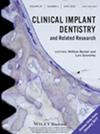Impact of Cantilever Length on the Accuracy of Static CAIS in Posterior Distal Free-End Regions
Abstract
Background
Implant placement accuracy in the distal free-end posterior region is often compromised, increasing the risk of damage to adjacent anatomical structures and negatively affecting restoration function, occlusal loading, and aesthetics.
Objectives
This study aimed to assess the accuracy of implant placement using static computer-assisted implant surgery (CAIS) in the posterior distal free-end partially edentulous area with varying cantilever lengths and to evaluate the correlation between cantilever length and implant deviations.
Materials and Methods
A prospective observational study involved 40 patients with 72 posterior implant sites, divided into three groups: 1-unit cantilever (1-UC; distal free-end with a mesial neighboring tooth), 2-unit cantilever (2-UC; one-tooth space from the mesial neighboring tooth), and control (single-tooth space with both mesial and distal neighboring teeth). Implants were placed using fully guided static CAIS, and accuracy was assessed by comparing angular and linear deviations at the implant platform and apex using post-operative CBCT scans. The correlation between cantilever length and implant deviations was analyzed.
Results
The 2-UC group exhibited significantly higher angular deviations (5.01° ± 2.41°) compared to the 1-UC (3.60° ± 1.92°, p = 0.033) and control groups (2.62° ± 1.13°, p < 0.001). The 3D deviations at both the platform and apex were also significantly greater in the 2-UC group (1.15 ± 0.38 mm, 1.74 ± 0.53 mm, respectively) than in the 1-UC (0.86 ± 0.35 mm, p = 0.001; 1.30 ± 0.47 mm, p = 0.002) and control groups (0.72 ± 0.30 mm, p < 0.001; 1.04 ± 0.38 mm, p < 0.001). Deviations in the cantilever groups predominantly trended towards the buccal and apical directions. Additionally, positive correlations were found between cantilever length and implant deviations at both the platform (R = 0.306, p = 0.034) and apex levels (R = 0.294, p = 0.042).
Conclusion
Cantilever length in posterior implant positions significantly affects the accuracy of implant placement using static CAIS. Implants positioned at a 2-unit cantilever or with lengths exceeding 10 mm are more prone to deviating from the planned positions.

 求助内容:
求助内容: 应助结果提醒方式:
应助结果提醒方式:


